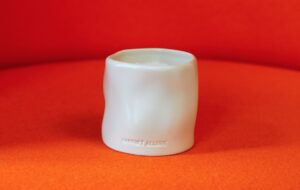|
|
||
|
In Stella Gibbons’ novel, Cold Comfort Farm (1932), the heroine Flora Poste’s best friend, Mrs Smiling, has an unusual hobby: “She was an authority on the cut, fit, colour, construction and proper functioning of brassieres.” Mrs Smiling has the largest collection in the world: “It was hoped that on her death it would be left to the nation.” Although it’s hard for us to see it now, this interest in such a recent invention marks the character not only as whimsical, but also ultra-modern; the novel is set in “the near future”, a fantasy world in which it’s more fashionable to live in Lambeth than in Mayfair and in which you can view the person you’re telephoning on a screen. It’s 100 years since Mary Phelps Jacob invented the modern brassière. It wasn’t the first attempt to free western women from corsets – Marie Tucek had patented “breast supports” 20 years before – but it was the first complete design to be patented. Jacob, a Manhattan socialite, frustrated that her corset was spoiling the lines of a sheer dress, improvised a support from two silk handkerchiefs and a ribbon. After friends and family asked her to make them similar contraptions, she realised the idea had wider appeal and applied for a patent. She explained to the US Patent Office that her design was for “a garment which is characterised by extreme simplicity, by freedom from bones … and which when worn is both comfortable and cool and so efficient that it may be worn even by persons engaged in violent exercise such as tennis.” Jacob’s sketches show a garment made of two trapezoidal pieces of material joined by a vertical seam; this flattened the breasts more lightly than a corset. US Patent 1115674 was granted in November 1914. Jacob tried to make and sell her Backless Brassière but soon sold the patent to Warner Brothers Corset Company for $1,500. (Warner Brothers is said to have made about $15 million dollars from Jacob’s idea during the next 30 years.) Later, in 1928, Ida Rosenthal came up with the idea of making bras with cups of different standardised sizes. Whereas the corset and Jacob’s Backless Brassière created a single moulded profile, Rosenthal’s bra lifted and separated the breasts, creating a very different silhouette. Rosenthal was already the owner of a dress shop called Maidenform, which set itself against “the Boyish Form” of flapperdom, and used the same name for her bestselling bra. The bra has more recently been seen as the enemy of first-wave feminists, but this image – of modern-day Savonarolas of the brassière – is false. In 1968, women’s liberation activists protested at the Miss America beauty contest in Atlantic City by throwing “instruments of female torture” – including bras, but also nylons, hair-curlers and copies of Playboy and Good Housekeeping – into a “freedom trash can”. As Carol Hanisch, an organiser of the protest, has explained, the protestors weren’t allowed to burn anything. She usually adds, confirming that it’s the corset that is always the greater evil, “I like to say that if they had called us girdle-burners that every woman in America would have run to join us.” Jacob was then elderly and unwell (she died in 1970), but I can imagine her cheering them on. Under her married name Caresse Crosby (her first husband had made her change her name), she ran an avant-garde press, set up an art gallery and a group called Women Against War and was friends with Buckminster Fuller. She once wrote, “I can’t say the brassière will ever take as great a place in history as the steamboat [one of her ancestors thought of that], but I did invent it.” |
Image Associated Press
Words Fatema Ahmed |
|
|
||


















